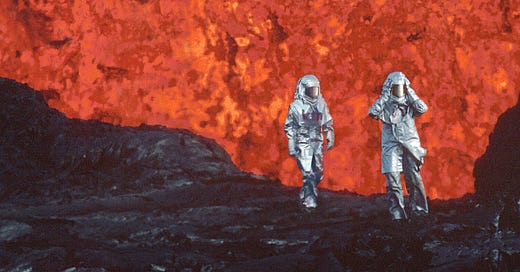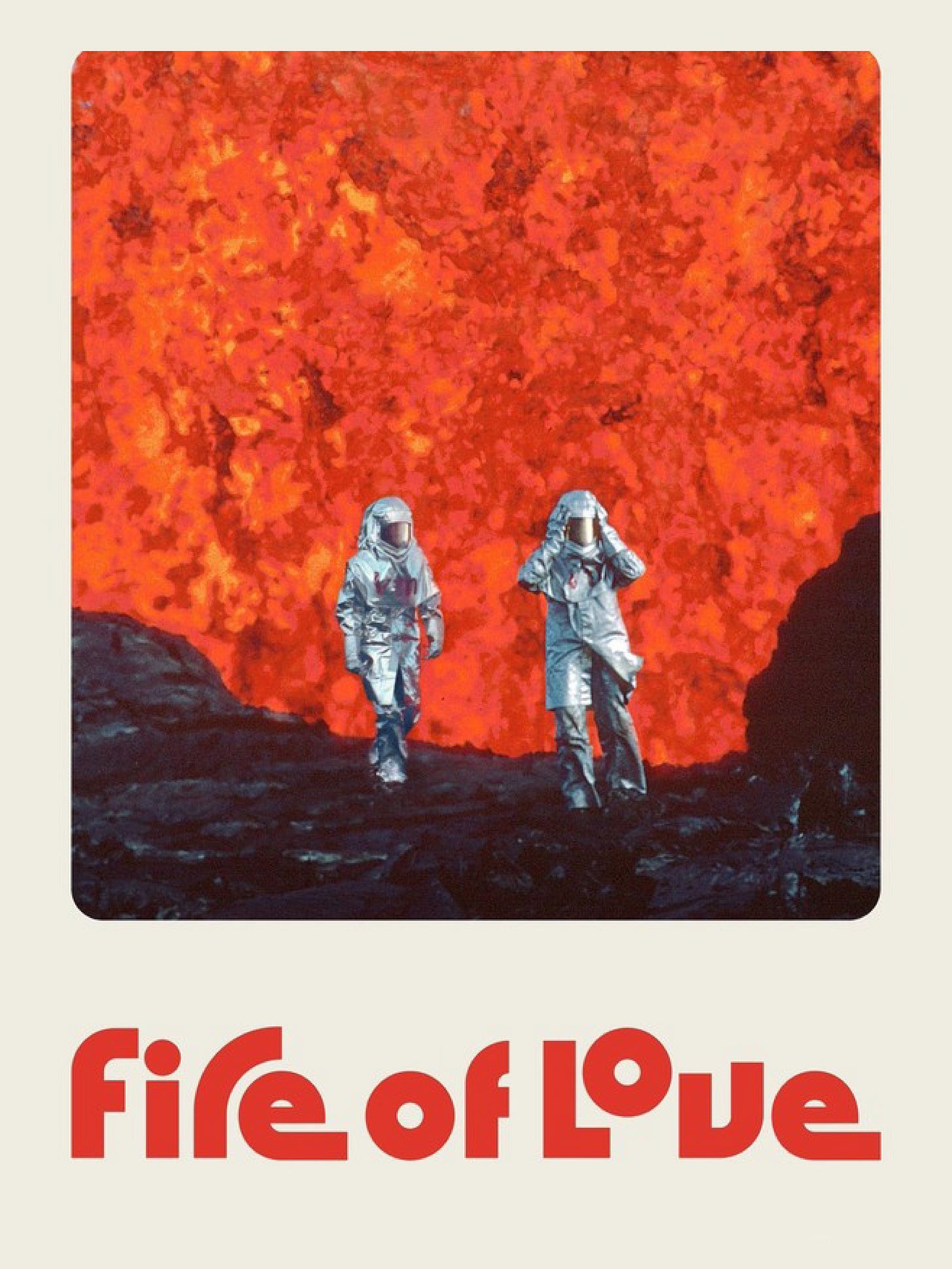Living in the shadow of the blast
It's easier to prepare for a volcanic eruption than for governmental collapse
Look west from Anchorage and on a clear day you’ll see them: a line of volcanoes whose jagged edges are reminders of their relative geologic youth. The Tordrillo range contains several active volcanoes, including one, Mount Spurr, that appears ready to erupt.
The activity began a few months ago. Rumblings underground and visible depressions on the surface.
A friend whose husband is a geologist texted our group chat in mid-February. The probabilities are higher than the media is saying, she said. It’s going to blow.
Mount Spurr is about 80 miles from Anchorage. If it erupts, depending on the wind, we will likely get coated in ash. This has happened before—the last time, in the early 90s. An acquaintance who lived through that eruption seems unbothered. We were fine, she said with a shrug.
But the preppers feel otherwise. You’ll want masks, a tarp to cover your car, plastic wrap for electronics, filters, and enough food and water for two weeks, a more cautious friend advised.
Volcanic ash contains tiny particles of glass. Breathing it can be toxic, and it wreaks havoc on electronics. For people with dogs, the advice is to buy “doggles” to cover their eyes and booties for their feet.
One article said we will have a better idea of when the eruption will occur at the onset of tremors. Perhaps like contractions in labor, the tremors indicate an imminent blast.
Predicting the eruption has entered the Anchorage zeitgeist. A recent party invited people to bet on its exact date and time while another is volcano-themed, complete with a “cheesy caldera” of Mount Fon-doom.
Volcanoes inspire us: a reminder of nature’s power and our comparatively tiny role.
There’s romance to living in the shadow. In Fire of Love, Miranda July narrates the story of Katia and Maurice Krafft, two volcanologists who meticulously filmed and photographed their studies of active volcanoes around the world. The film looks like Wes Anderson’s dreams, except real.
Katia and Maurice endeavor to reduce the fatality of volcanoes by learning as much as they can about when and how eruptions occur. Yet they, too, were killed by a blast that took them by surprise.
Their footage of flowing magma is a reminder of the illusion that we live on solid ground. The earth moves beneath us, mostly imperceptibly. Every so often, we are faced with its cracks.
It’s comforting to be given instructions for how to prepare for a volcanic eruption, yet alarming to find no such instructions for other impending doom. No clear-cut guides disseminated through mass media outlets, at least. No “doggles” designed for the looming authoritarian cloud.
Even in this age of information, it’s hard to know who to trust.
But still, we read the signs. We spot tremors underground and depressions on the surface. We stockpile and take care of our own.
Volcanoes are not the threat. Katia and Maurice knew that, despite its occasional destruction, a volcano means no harm. It has no desire to wreck villages or bury people or change the atmospheric composition such that summer never comes. It’s just a volcano. And sometimes, to release the pressure from within, it needs to blow.
Some links to ~peak your curiosity:
Nat Herz on the eruption prediction cycle for his newsletter, Northern Journal (go for the journalism, stay for the doggles).
Fire of Love, thanks to documentary recommendations in Cody Cook-Parrott’s newsletter a year or two ago.
Tracking small victories despite what they mean for the partisanship of state courts and the absurdity of campaign finance laws.
A helpful attempt to understand the present political shadow.
And, to end with a bang, a view of smoke rising from Mount Spurr.









On Aug 18, 1992, I arrived at ANC for my Delta flight to Seattle. Was in Alaska working on an auroral radio propagation study with the Univ. Of Alaska Fairbanks. And the ash began to fall. Finally departed ANC on Aug 25. We wanted to take home some “clean ash”, and we needed containers. Someone told us about REI, which I had not heard of before. We walked to REI from our hotel, which was 5 to 10 minutes north of Gweenie’s. That was when I joined REI - in the Spurr eruption aftermath. Got two one-pint Nalgene bottles, and filled them with Spurr ash off our rental car’s windshield. These bottles are sitting atop our refrigerator as I write this. Amazing what a pending volcanic eruption can do to stimulate memories. Have fun with your pending disaster.
dude, thank you, gently, for bringing both mount spurr's reality and the miranda july film to my attention. x2, new to me..so out of it.